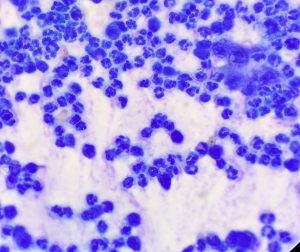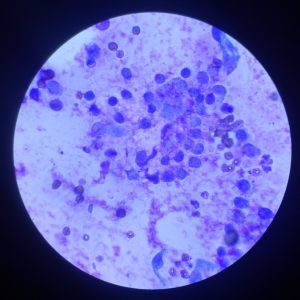
The lump is secured.

A needle is placed into the centre of the lump.

The microscopic sample is expressed onto a microscope slide.

The slide is examined under the microscope.
The picture above shows a fatty mass called a lipoma. These are benign fatty lumps that grow slowly. The fat produces droplets seen microscopically often with little fat cells on closer examination.
Other results may include



 Make an
Make an  Call us on
Call us on Or message us through the website or email
Or message us through the website or email